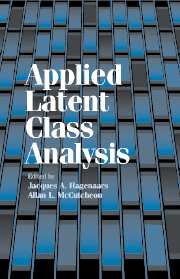Appendix C: Selected Software; Webpage
Published online by Cambridge University Press: 31 July 2009
Summary
In the past several years, a number of programs that estimate latent class models have appeared. These programs, based on maximum-likelihood estimation, have clearly superceded the earliest programs for latent class analysis: MLLSA (maximum likelihood latent structure analysis) by Clifford Clogg, LCAG (latent classes according to Goodman) by Jacques Hagenaars and Ruud Luijkx, and LAT and Newton by Shelby Haberman. The programs listed herein are a selection of some of the better-known programs that are currently available for solving a variety of latent class models.
WINMIRA
WINMIRA is a Windows-based program that estimates and tests a wide variety of discrete mixture models for categorical variables, including models with both nominal and continuous latent variables. In addition to latent class models, this program can be used to estimate Rasch models and mixed Rasch models with dichotomous and polytomous data.
PANMARK
PANMARK estimates and tests a range of latent class models, although as its name – a combination of panel Markov models – implies, this program was developed to estimate longitudinal latent class models. PANMARK also has a number of features such as its ability to generate multiple sets of starting values, which may be useful in avoiding local maxima, its reporting of asymptotic standard errors for model parameter estimates, and its use of bootstrapping methods for comparing models with different numbers of latent classes.
LATENTGOLD
LatentGOLD is a Windows-based latent class analysis program that is compatible with SPSS.
- Type
- Chapter
- Information
- Applied Latent Class Analysis , pp. 442 - 444Publisher: Cambridge University PressPrint publication year: 2002
- 1
- Cited by

